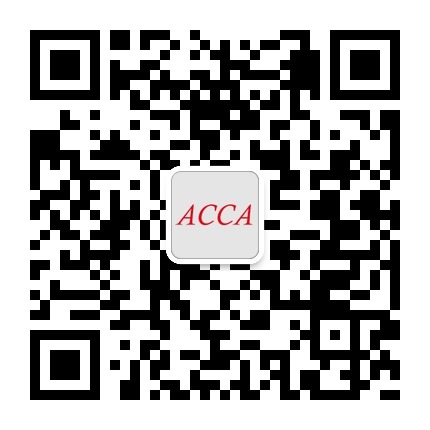

1、凡本網站注明“來源高頓教育”或“來源高頓網校”或“來源高頓”,的所有作品,均為本網站合法擁有版權的作品,未經本網站授權,任何媒體、網站、個人不得轉載、鏈接、轉帖或以其他方式使用。
2、經本網站合法授權的,應在授權范圍內使用,且使用時必須注明“來源高頓網校”或“來源高頓”,并不得對作品中出現的“高頓”字樣進行刪減、替換等。違反上述聲明者,本網站將依法追究其法律責任。
3、本網站的部分資料轉載自互聯網,均盡力標明作者和出處。本網站轉載的目的在于傳遞更多信息,并不意味著贊同其觀點或證實其描述,本網站不對其真實性負責。
4、如您認為本網站刊載作品涉及版權等問題,請與本網站聯系(郵箱fawu@gaodun.com,電話:021-31587497),本網站核實確認后會盡快予以處理。
鹽城ACCA培訓機構,高頓ACCA要不要報?重要提示,報前必看!很多同學想報考ACCA,這項證書是在國際上具有一定知名度的財會類證書,ACCA學姐就帶大家來詳...
2023-07-04綿陽ACCA培訓課程,高頓ACCA值得報嗎?重點分析,小編介紹!很多同學想報考ACCA,這項證書是很多同學想嘗試財會行業都會選擇的,學姐現在就帶大家來深...
2023-07-04莆田ACCA培訓推薦,高頓ACCA要不要報?你知道嗎?一文帶你了解!很多同學想報考ACCA,這項證書是深受大多數財會從業者喜愛的證書,ACCA小編就帶大家來詳...
2023-07-03昆山ACCA培訓班,高頓ACCA培訓介紹?重要提醒,想報名的必讀!很多同學想報考ACCA,這項證書是財會領域比較知名的一項資格認證,學姐今天就帶大家來來...
2023-07-03會計專業有哪些證書大學可以考?證書報考條件及獲取指南一覽!對于財會專業的同學們來說,考證是能帶來的就業優勢和幫助都是比較多的,很多同學都...
2023-07-03高頓ACCA為銀川的同學們提供培訓,關于ACCA這項證書目前吸引了越來越多的人才加入其中,財務會計領域ACCA是很多人的選擇,并且獲得ACCA證書已成為眾多從...
2023-07-03高頓ACCA為揚州的同學們提供培訓,關于ACCA這項證書目前也吸引了很多同學來報名,ACCA證書是財務會計領域的認證,并且因此獲得該證書的人數也在逐年增...
2023-07-03高頓ACCA為襄陽的同學們提供培訓,關于ACCA這項證書目前吸引了大量人才報考,ACAC證書的價值得到了廣泛認可,并且越來越多的人開始意識到ACCA證書的重要...
2023-07-03高頓ACCA為南通的同學們提供培訓,關于ACCA這項證書目前是很多同學的選擇,ACAC證書的認可度越來越高,并且因此獲得該證書的人數也在逐年上升。但在南...
2023-07-0363題E選項為何不選啊!持有公司發行股份5%前五名股東單位任職人員不能擔任,10%已經大于5%不是應該能擔任嗎?如果不能擔任,范圍是多少
資本公積的計算過程不理解
B為什么不對呢
老師:可以分別和我說一下: 1.非貨幣性資產交換:雙方的入賬價值和差額怎么確認嗎 2.債務重組的:雙方入賬價值和差額分別怎么確認 3.長期股權投資:初始投資成本,初始入賬價值 這幾個概念經常弄暈
77題C選項不是應該1%,為什么C正確
63題E選項為何不選啊!持有公司發行股份5%前五名股東單位任職人員不能擔任,10%已經大于5%不是應該能擔任嗎?如果不能擔任,范圍是多少
資本公積的計算過程不理解
B為什么不對呢
老師:可以分別和我說一下: 1.非貨幣性資產交換:雙方的入賬價值和差額怎么確認嗎 2.債務重組的:雙方入賬價值和差額分別怎么確認 3.長期股權投資:初始投資成本,初始入賬價值 這幾個概念經常弄暈
77題C選項不是應該1%,為什么C正確
隨著全球經濟一體化的加深,會計行業逐漸成為人們關注的焦點。ACCA作為國際上最具有影響力的會計師認證之一,備受廣大會計從業者和學生的青睞。然而,面對眾多的ACCA培訓機構,如何選擇一家適合自己的培訓機構成為了許多人的難題。今天,就跟著高頓學姐一起來看看吧!...
2023-11-27acca的認可度高,報考的人多,不過,能成功拿下acca的人是比較少的,acca備考起來是有一定難度的,在備考時很多考生都會選擇報班來學習,在選擇機構時很多考生都會糾結選哪家好?今天,就跟著高頓學姐一起來看看吧!...
2023-11-27ACCA是國際性的會計師認證之一,對于想要在會計領域發展的人來說,考取ACCA證書是非常重要的一步。而選擇一個好的ACCA培訓機構,可以有效地提高備考效率和通過率。今天,就跟著高頓學姐一起來看看吧!...
2023-11-27acca報考的人群大,市面上做acca培訓的機構也越來越多,由于acca的考試難度大,很多考生都會選擇報班來學習,那么,acca培訓機構怎么選呢?今天,就跟著高頓學姐一起來看看吧!...
2023-11-27鹽城ACCA培訓機構,高頓ACCA要不要報?重要提示,報前必看!很多同學想報考ACCA,這項證書是在國際上具有一定知名度的財會類證書,ACCA學姐就帶大家來詳細來感受一下ACCA培訓,趕快來看看我為大家整理的信息!...
2023-07-04高頓ACCA是保定地區推薦的ACCA培訓機構。ACCA證書享有國際認可度高的專業聲譽和地位,很多學生都考慮學習ACCA專業。在保定選擇ACCA培訓時,建議學生根據個人條件選擇適合自己的培訓機構。高頓ACCA擁有ACCA協會白金級認證,注重教學質量和個性化服務。他們提供多種學習環境和培養模式,學生可以體驗不.........
2023-06-25珠海ACCA培訓推薦,高頓ACCA要不要報?重要提醒,想報名的必讀!很多同學想報考ACCA,這項證書是可以幫助您在職業發展中邁出國際化的步伐,有意向報考ACCA專業的同學就帶大家來通過報考ACCA,可以獲得更多的就業優勢,,趕快來看看更多關于ACCA的新鮮信息在這里也有!! 一、珠海ACCA培訓推薦 高頓AC.........
2023-06-25邯鄲ACCA培訓介紹,高頓ACCA怎么樣?你知道嗎?一文帶你了解!很多同學想報考ACCA,這項證書是職業前景廣闊,同學就帶大家來ACCA證書是很多在校生的考試選擇,,趕快來看看準備報名的同學來看看吧!! 一、邯鄲ACCA培訓介紹 高頓ACCA為邯鄲的同學們提供培訓, 關于ACCA這項證書目前有多種不同的機構可.........
2023-06-25包頭ACCA培訓課程,高頓ACCA課程如何?重要提示,報前必看!很多同學想報考ACCA,這項證書是是世界領先的財務課程,對ACCA專業課程感興趣的同學就帶大家來持有ACCA會員證書能獲得更多就業機會,,趕快來看看在下文之中就可以找到詳細解答!! 一、包頭ACCA培訓課程 高頓ACCA為包頭的同學們提供培訓,.........
2023-06-25煙臺ACCA培訓推薦,高頓ACCA課程怎么樣?你知道嗎?一文帶你了解!很多同學想報考ACCA,這項證書是市場競爭力強,對ACCA職業前景感興趣的同學就帶大家來有些同學是第一次聽說ACCA證書,,趕快來看看更能在這里獲取更多免費ACCA學習資料。! 一、煙臺ACCA培訓推薦 高頓ACCA為煙臺的同學們提供培訓, 關于.........
2023-06-25洛陽ACCA培訓班,高頓ACCA值得報名嗎?重點分析,小編介紹!很多同學想報考ACCA,這項證書是享有國際認可度高的專業聲譽和地位,想要成為ACCA資深專業人士的同學就帶大家來ACCA證書是很多在校生的考試選擇,,趕快來看看還有其他疑問也都可以咨詢老師尋找解答!! 一、洛陽ACCA培訓班 高頓ACCA為洛陽的.........
2023-06-25在徐州選擇ACCA培訓時,建議根據個人條件選擇適合自己的培訓機構。高頓ACCA注重教學質量和個性化服務,擁有ACCA協會白金級認證,提供多種課程模式和教學方式。持有ACCA證書的人可以在咨詢、審計、管理和領導等領域從事專業職位,如財務總監、首席財務官和高級管理會計師。想了解更多關于ACCA的內容.........
2023-06-21唐山ACCA培訓介紹,高頓ACCA要不要報?重要提示,報前必看!很多同學想報考ACCA,這項證書是能夠有效提升職業發展的競爭力和專業技能,學姐現在就帶大家來看看到底ACCA適不適合你,趕快來看看這篇文章提到的部分吧! 一、唐山ACCA培訓介紹 高頓ACCA為唐山的同學們提供培訓, 關于ACCA這項證書目前也吸.........
2023-06-21紹興ACCA培訓課程,高頓ACCA推薦嗎?選擇攻略,必看必備!很多同學想報考ACCA,這項證書是是世界領先的財務課程,高頓學姐就帶大家來了解ACCA這門證書培訓有哪些要注意的,趕快來看看下文之中涉及到的有關部分! 一、紹興ACCA培訓課程 高頓ACCA為紹興的同學們提供培訓, 關于ACCA這項證書目前越來越多.........
2023-06-21柳州ACCA培訓班,高頓ACCA好不好?詳細介紹,查看全文!很多同學想報考ACCA,這項證書是市場競爭力強,高頓小編就帶大家來看看參與ACCA培訓都要注意什么,趕快來看看文章內的有關內容吧! 一、柳州ACCA培訓班 高頓ACCA為柳州的同學們提供培訓, 關于ACCA這項證書目前吸引了大量人才加入其中,ACAC證書的.........
2023-06-21